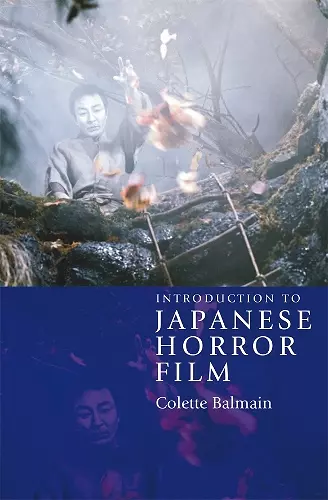Introduction to Japanese Horror Film
Format:Paperback
Publisher:Edinburgh University Press
Published:14th Oct '08
Currently unavailable, and unfortunately no date known when it will be back

This book is a major historical and cultural overview of an increasingly popular genre. Starting with the cultural phenomenon of Godzilla, it explores the evolution of Japanese horror from the 1950s through to contemporary classics of Japanese horror cinema such as Ringu and Ju-On: The Grudge. Divided thematically, the book explores key motifs such as the vengeful virgin, the demonic child, the doomed lovers and the supernatural serial killer, situating them within traditional Japanese mythology and folk-tales. The book also considers the aesthetics of the Japanese horror film, and the mechanisms through which horror is expressed at a visceral level through the use of setting, lighting, music and mise-en-scene. It concludes by considering the impact of Japanese horror on contemporary American cinema by examining the remakes of Ringu, Dark Water and Ju-On: The Grudge.The emphasis is on accessibility, and whilst the book is primarily marketed towards film and media students, it will also be of interest to anyone interested in Japanese horror film, cultural mythology and folk-tales, cinematic aesthetics and film theory.Key Features:*Covers classics of Japanese horror film such as Pitfall, Tales of Ugetsu, Kwaidan, Onibaba, Hellish Love and Empire of Desire alongside less well-known cult films such as Pulse, St John’s Wort, Infection and Living Hell: A Japanese Chainsaw Massacre.*Includes analysis of the relationship between cultural mythology and the horror film.*Explores the evolution of the erotic ghost story in the 1960s and 1970s.*Examines the contemporary relationship between Japanese horror film and American horror.*Contains 9 B&W film stills.
Scholars and spectators of world cinema coming to Japanese horror will find much to whet their appetites here, and will take away a solid grounding in the roots of this particular genre, presented accessibly and sincerely throughout. -- Timothy Iles, Associate Professor, Department of Pacific and Asian Studies, University of Victoria Electronic Journal of Contemporary Japanese Studies Even though this book is primarily oriented toward an audience with film and media background, it can be appealing to anyone who is interested in Japanese horror movies and Japanese anime and manga. In fact, through sustained references to Japanese mythology and folktales, it provides the reader with a deep insight into Japanese culture and the Western influence on its evolution. This book can actually be considered an original analysis of a transversal type of transformative work because it showcases the continuous cross-cultural influences between the United States/Europe and Japan that are elaborated and incorporated in each country's movie production. Of particular interest are the author's frequent comparisons with American horror that underline Western and Eastern cultural differences and how they are reflected through a film genre that has universal connotations. Thus, the book successfully overcomes Western readers' possible biases and allows them to fully understand the intrinsic meaning of symbols and archetypes that permeate the Japanese horror genre. -- Alessia Alfieroni Transformative Works and Cultures Scholars and spectators of world cinema coming to Japanese horror will find much to whet their appetites here, and will take away a solid grounding in the roots of this particular genre, presented accessibly and sincerely throughout. Even though this book is primarily oriented toward an audience with film and media background, it can be appealing to anyone who is interested in Japanese horror movies and Japanese anime and manga. In fact, through sustained references to Japanese mythology and folktales, it provides the reader with a deep insight into Japanese culture and the Western influence on its evolution. This book can actually be considered an original analysis of a transversal type of transformative work because it showcases the continuous cross-cultural influences between the United States/Europe and Japan that are elaborated and incorporated in each country's movie production. Of particular interest are the author's frequent comparisons with American horror that underline Western and Eastern cultural differences and how they are reflected through a film genre that has universal connotations. Thus, the book successfully overcomes Western readers' possible biases and allows them to fully understand the intrinsic meaning of symbols and archetypes that permeate the Japanese horror genre.
ISBN: 9780748624751
Dimensions: unknown
Weight: 393g
232 pages